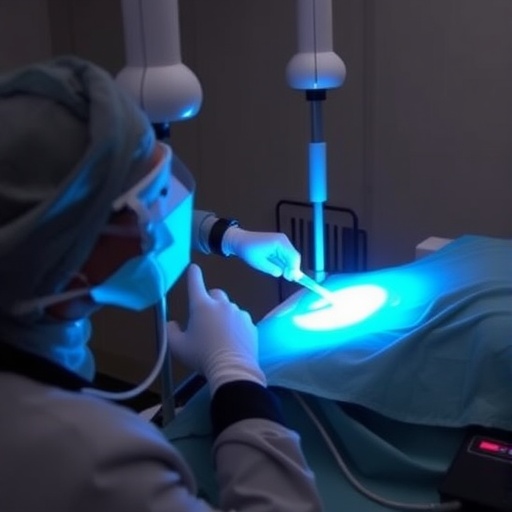WASHINGTON, D.C., Nov. 22, 2016 — The quest to develop a wireless micro-robot for biomedical applications requires a small-scale "motor" that can be wirelessly powered through biological media. While magnetic fields can be used to power small robots wirelessly, they do not provide selectivity since all actuators (the components controlling motion) under the same magnetic field just follow the same motion. To address this intrinsic limitation of magnetic actuation, a team of German researchers has developed a way to use microbubbles to provide the specificity needed to power micro-robots for biomedical applications.
This week in Applied Physics Letters, from AIP Publishing, the team describes this new approach that offers multiple advantages over previous techniques.
"First, by applying ultrasound at different frequencies, multiple actuators can be individually addressed; second, the actuators require no on-board electronics which make them smaller, lighter and safer; and third, the approach is scalable to the sub-millimeter size," said Tian Qiu, a researcher at the Max Planck Institute for Intelligent Systems in Germany.
The research team encountered some surprises along the way. Normally a special material, like a magnetic or piezoelectric material, is required for an actuator. In this case, they used a standard commercial polymer that simply traps air bubbles, and then used the air-liquid interface of the trapped bubbles to convert the ultrasound power into mechanical motion.
"We found that a thin surface (30-120 micrometers effective thickness) with appropriate topological patterning can provide propulsion force using ultrasound, and thousands of these bubbles together can push a device at millimeter scale," Qiu said. "The simplicity of the structure and material to accomplish this task was a pleasant surprise."
The team is already looking forward to developing their actuator further.
"The next steps are to increase the propulsive force of the functional surface, to integrate the actuator into a useful biomedical device, and then to test it in a real biological environment, including in vivo," Qiu said.
The adoption of micro-structured surfaces as wireless actuators opens promising new possibilities in the development of miniaturized devices and tools for fluidic environments accessible by low intensity ultrasound fields. These functional surfaces could serve as ready-to-attach wireless actuators, powering miniaturized biomedical devices for applications such as active endoscopes.
###
The article, "Wireless actuation with functional acoustic surfaces," is authored by T. Qiu, S. Palagi, A.G. Mark, K. Melde, F. Adams and P. Fischer. The article will appear in the journal Applied Physics Letter on November 22, 2016 (DOI: 10.1063/1.4945311). After that date, it can be accessed at http://scitation.aip.org/content/aip/journal/bmf/10/2/10.1063/1.4945311.
ABOUT THE JOURNAL
Applied Physics Letters features concise, rapid reports on significant new findings in applied physics. The journal covers new experimental and theoretical research on applications of physics phenomena related to all branches of science, engineering, and modern technology. See http://apl.aip.org.
Media Contact
AIP Media Line
[email protected]
301-209-3090
@jasonbardi
http://www.aip.org
############
Story Source: Materials provided by Scienmag




